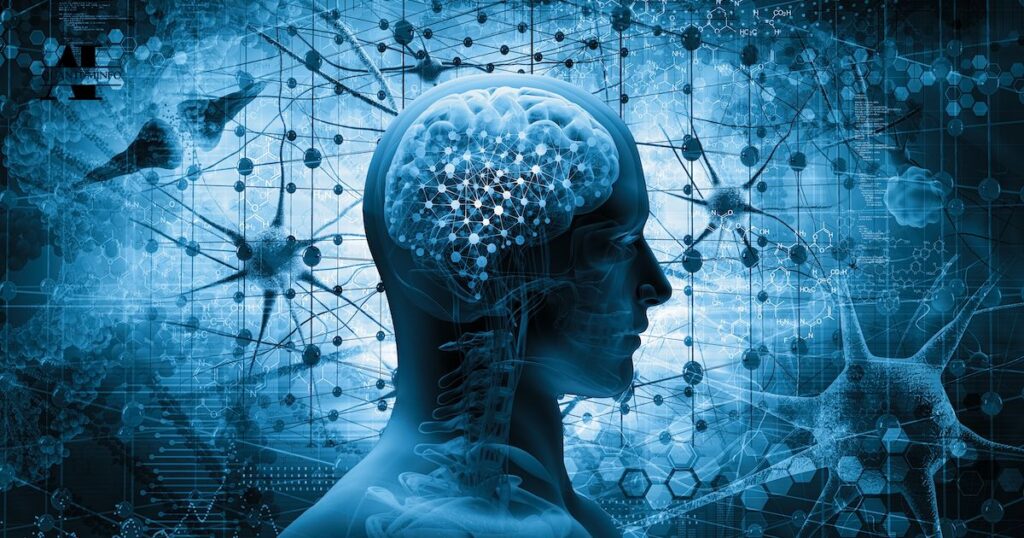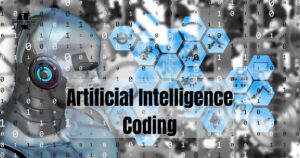Artificial intelligence artwork generators are revolutionizing the way art is created, enabling anyone to create visually stunning images with minimal effort. These tools use the latest machine learning algorithms to create unique pieces of art, offering new opportunities for creativity. As AI continues to evolve, these generators are becoming an increasingly integral part of the modern art landscape.
Imagine creating captivating visuals effortlessly — no artistic training required, just the magic of your imagination and artificial intelligence. AI artwork generators are revolutionizing creativity, turning imaginative ideas into stunning masterpieces with extraordinary ease. Are you ready to unlock the future of art and dive into this technological marvel? Let’s start this creative journey!
Creating stunning, one-of-a-kind art in moments, using only the power of artificial intelligence. AI artwork generators are sparking a creative renaissance, where imagination meets innovation. Dive into this revolutionary tool that transforms your visions into visual masterpieces with unprecedented ease. Ready to explore the future of artistry?
What is an AI Artwork Generator?
An AI artwork generator is a software application or online tool that uses artificial intelligence to create images or visual art. These tools can generate art based on user-supplied instructions or a set of parameters. For example, a user can enter a description of a scene, such as “beach at sunset with palm trees,” and the AI will generate a corresponding image.
AI artwork generators are designed to be user-friendly, often requiring no technical knowledge or artistic skills. This makes them accessible to a wide audience, from professional artists experimenting with new techniques to casual users who want to create something visually appealing without having to manually draw or paint.
How do AI artwork generators work?
AI artwork generators rely on a type of artificial intelligence called machine learning. Machine learning involves training an AI model on a large dataset of images, from which the AI can learn patterns, colors, shapes, and other visual elements. Once trained, the AI can use that knowledge to create new images based on user input.
Here’s a simple breakdown of how the process works:
Training the AI Model
The first step in building an AI artwork generator is training the AI model. This involves feeding the AI a large data set of images, often millions or more. These images are labeled with relevant information, such as the objects they contain, their colors, and their styles. AI uses this data to learn how to recognize and mimic different visual elements.
Generating images
Once an AI model is trained, it can generate new images. When a user enters a description or set of parameters, the AI processes that input and creates an image that matches the description. AI draws on patterns and information learned during training to create something new.
Refinement and iteration
Many AI artwork generators allow users to refine the generated image by providing feedback or adjusting parameters. For example, the user can ask the AI to make the image more detailed, change the color scheme, or add specific elements. The AI can then reconstruct the image with these changes.
Popular AI artwork generators

Many AI artwork generators have gained popularity due to their ability to create stunning and unique images. Below are some popular tools:
DALL-E
Developed by OpenAI, DALL-E is one of the most advanced AI artwork generators available. It can create text-detailed images from simple objects to complex scenes. DALL-E is known for its ability to create highly detailed and imaginative images, making it a favorite among artists and designers.
Midjourney
Midjourney is another powerful AI tool that specializes in creating high-quality images. It is especially popular among digital artists for its ability to produce visually stunning and polished artwork. Midjourney allows users to experiment with different styles and techniques, making it a versatile tool for creative projects.
Artbreeder
Artbreeder takes a slightly different approach by allowing users to mix and match existing images to create new images. Users can start with a basic image and adjust various sliders to change features like color, style, and texture. Art Breeder is particularly popular for creating portraits and landscapes, and it encourages users to explore endless possibilities by combining different visual elements.
Advantages of AI Artwork Generators
AI artwork generators offer many advantages, making them valuable tools for artists, designers, and casual users. Some of the key benefits include:
Accessibility
One of the most important advantages of AI artwork generators is their accessibility. These tools democratize art creation by allowing anyone, regardless of skill level, to create visually appealing images. Users don’t need to know how to draw, paint, or use complex software to create art.
Here, Artificial Intelligence Remove Clothes
Speed and efficiency
AI artwork generators can create images quickly, often in seconds. This performance is especially valuable for artists and designers who need to produce multiple versions of an image or explore different creative directions in a short amount of time.
Creative Exploration
AI artwork generators encourage creative exploration by giving users the ability to experiment with different styles, colors, and compositions. These tools can spark ideas and inspiration that users might not have considered on their own, leading to new and innovative artwork.
Customization and Control
While AI artwork generators can create images with minimal input, many tools offer options for customization. Users can adjust parameters, provide feedback, and refine the generated images to suit their preferences. This level of control allows for a more personalized creative process.
Collaboration between AI and Humans
AI artwork generators do not replace human creativity but complement it. These tools can act as companions, helping artists bring their ideas to life or providing a starting point for further creative development.
Challenges and concerns
Despite their many advantages, AI artwork generators also present challenges and concerns that need to be addressed. Some of the most troubling issues include:
Originality and authorship
One of the primary concerns surrounding AI-generated art is the question of originality. Since AI models are trained on existing images, there is a risk that the art created may resemble or copy parts of other artworks. This raises questions about authorship and whether AI-generated art can truly be considered original.
Impact on human artists
There is an ongoing debate about the impact of AI artwork generators on human artists. Some fear that AI could reduce demand for human-created art, potentially threatening jobs and livelihoods in the creative industry. However, others argue that AI is a tool that can augment human creativity rather than replace it.
Ethical concerns
The use of AI in art also raises ethical concerns. For example, AI-generated art has the potential to be used inappropriately, such as deepfaking or creating misleading images. Additionally, the use of copyrighted material in training AI models raises legal and ethical questions about ownership and fair use.
Bias in AI models
AI models are only as good as the data they are trained on. If the training data is biased or lacks diversity, the AI-generated art may also reflect these biases. This can result in images that reinforce stereotypes or exclude certain viewpoints. Addressing bias in AI is an important challenge that requires careful consideration and ongoing research.
The role of human creativity in AI-generated art

While AI artwork generators are powerful tools, human creativity is central to the artistic process. AI can help create art, but it still relies on human input to work effectively. Here’s how human creativity plays an important role in AI-generated art:
Guiding the AI
Users provide the initial input that guides the AI to create art. Whether it’s a description of text, a set of parameters, or a basic image, AI needs human direction to know what to create. This input reflects the user’s creative vision and intentions.
Interpretation and refinement
After the AI creates an image, the user often interprets the result and decides whether to keep it, modify it, or create a new version. This process of refinement is where human creativity shines, as users make decisions that align with their artistic goals.
Here, Artificial Intelligence Detection
Combining AI with Traditional Techniques
Many artists use AI artwork generators as part of a broader creative process that incorporates traditional techniques. For example, an artist can use AI to create a basic image and then add their touches using painting, drawing, or digital editing tools. This combination of AI and human creativity results in a unique and personalized art.
Exploring new ideas
AI artwork generators can inspire new ideas and push the boundaries of what’s possible in art. By presenting unexpected combinations or styles, AI can spark new creative directions that the artist might not have considered. This collaboration between AI and human creativity leads to innovative and groundbreaking artwork.
AI artwork generators in the world of art
The introduction of AI artwork generators has had a significant impact on the art world, sparking both excitement and debate. These tools are being embraced by some artists and art institutions, while others approach them with caution. Here’s a closer look at how AI artwork generators are impacting the art world:
Acceptance and integration
AI-generated art is gaining acceptance in various circles of the art world. Some artists use AI as a tool to experiment with new styles and techniques, while others incorporate AI-generated elements into their traditional artwork. Art galleries and exhibitions are also starting to exhibit AI-generated art, recognizing it as a legitimate and innovative form of creative expression.
Expanding the definition of art
The use of AI in art challenges traditional definitions of what art is and who can create it. AI artwork generators blur the lines between human and machine creativity, prompting conversations about the nature of art and the role of technology in the creative process. This broadening of the definition of art opens up new possibilities and encourages a broader exploration of creative expression.
Collaboration and Community
AI artwork generators have fostered a sense of collaboration and community among artists. Many platforms allow users to share their AI-generated art, exchange ideas, and collaborate on projects. This sense of community has led to the creation of new artistic movements and trends that are driven by AI technology.
Challenges to Traditional Art Markets
The rise of AI-generated art presents challenges to traditional art markets. Questions about the value of AI-generated art, the role of human artists, and the potential for mass production are reshaping how art is bought, sold, and appreciated. These challenges are fueling the conversation about the future of art in the digital age.
Get Started with AI Artwork Generation
This section focuses on guiding readers through the initial steps of using AI tools to create artwork. It covers key aspects such as understanding AI artwork generators, selecting the right tool based on personal preferences, and experimenting with different features to produce unique images. It also emphasizes the importance of incorporating one’s artistic style into the AI-generated outputs and encourages sharing work within artistic communities. Finally, it suggests staying updated on advancements in AI art technology to enhance creative skills continuously.
Ethical considerations
The use of AI in artwork generation raises several ethical considerations that must be carefully navigated. As AI technology continues to evolve, these issues must be addressed to ensure the responsible and ethical use of AI in art:
Copyright and Ownership
One of the most pressing ethical issues is copyright and ownership of AI-generated art. Since AI models are trained on existing images, there is concern that the art created may infringe the copyrights of the original creators. Determining who owns the rights to AI-generated art—whether the user, the AI developer, or the original creator of the training data—remains a complex legal challenge.
Transparency and Attribution
Transparency and attribution are important when using AI to create art. Artists and consumers must be clear about how AI is used in the creative process and where credit is due. This helps maintain honesty in the art world and ensures that contributors are recognized for their work.
Misuse and Malicious Applications
AI artwork generators can be misused to create harmful or misleading images, such as deepfakes or propaganda. This unethical use of AI-generated art can have serious consequences, including spreading misinformation, damaging reputations, or inciting violence. It is important to use AI artwork generators responsibly and be aware of potential risks.
Bias and Representation
AI models can reflect biases in the data they are trained on. This can lead to AI-generated art that reinforces stereotypes or excludes certain groups. Addressing bias in AI requires careful attention to the diversity and quality of training data, as well as ongoing efforts to improve the transparency and inclusion of AI-generated art.
The future of AI artwork generators

The future of AI artwork generators is full of exciting possibilities. As AI technology advances, we can expect to see even more sophisticated and powerful tools that push the boundaries of creativity. Here are some possible developments in the world of AI-generated art:
Improved realism and detail
Future AI artwork generators will likely produce images with even greater realism and detail. Advances in machine learning and computer vision will allow AI to create highly complex and lifelike images that closely resemble traditional artwork.
Expanded Creativity
As AI continues to evolve, artwork generators will likely expand their creativity. This can include 3D models, animations, or even interactive art experiences. AI may also be able to create art that responds to real-time input or adapts to different environments, opening up new possibilities for immersive and dynamic art.
Integration with other technologies
AI artwork generators can further integrate with other technologies, such as augmented reality (AR) and virtual reality (VR). This integration could enable users to create and interact with AI-generated art in entirely new ways, such as viewing 3D art in virtual space or overlaying AI-generated images in the real world.
Collaboration with artists
The relationship between AI and human artists will continue to grow, with more artists embracing AI as a partner rather than a competitor. We may see the emergence of new artistic movements that combine AI-generated art with traditional techniques, leading to innovative and hybrid forms of creative expression.
Ethical and Legal Framework
As AI-generated art becomes more popular, there will be an increasing need for an ethical and legal framework to address issues of copyright, ownership, and responsible use. These frameworks will help ensure that AI artwork generators are used in a way that respects the rights of all creators and promotes fairness and transparency in the art world.
Frequently Asked Question
What is an AI artwork generator, and how is it different from traditional art tools?
An AI artwork generator uses machine learning to automatically generate images, unlike traditional tools that require manual input.
How do AI artwork generators use machine learning to create images?
They learn from large datasets of images, recognizing patterns and styles, and generating new, unique images based on user input.
What are some popular AI artwork generators available today?
Popular AI artwork generators include DALL-E, Midjourney, and Artbreeder, each offering unique features for creating art.
Final Thoughts
Artificial intelligence artwork generators represent a significant change in the way art is created and appreciated. These tools democratize creativity, making it accessible to everyone, while also pushing the boundaries of what is possible in art.
Although they raise important questions about originality, authorship, and ethics, AI artwork generators offer exciting new possibilities for artists and non-artists alike.
As technology advances, these tools will likely become more integrated into the art world, fostering innovation and inspiring new creative expressions. The future of art is poised to be an exciting blend of human creativity and AI-powered ingenuity.









